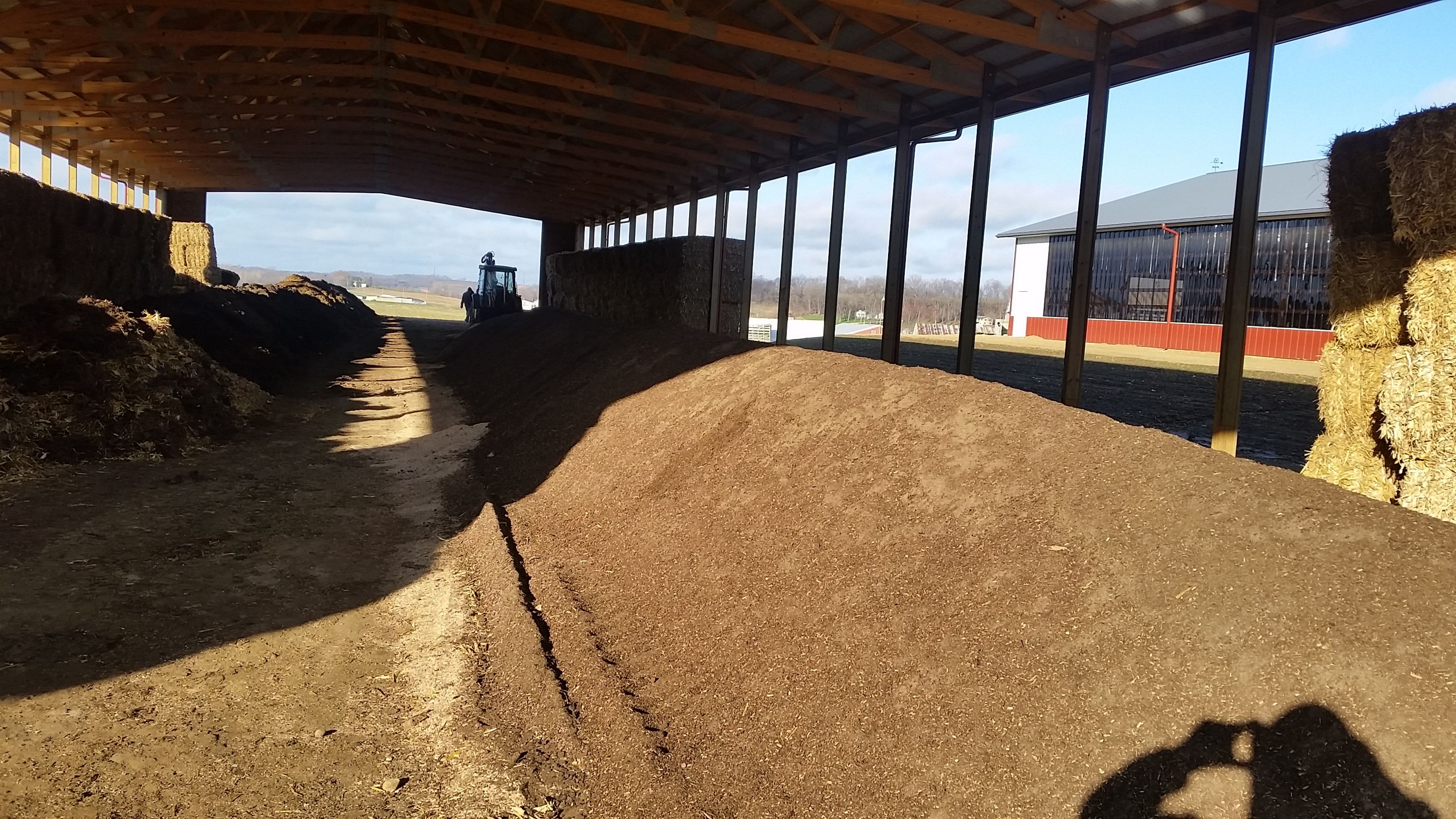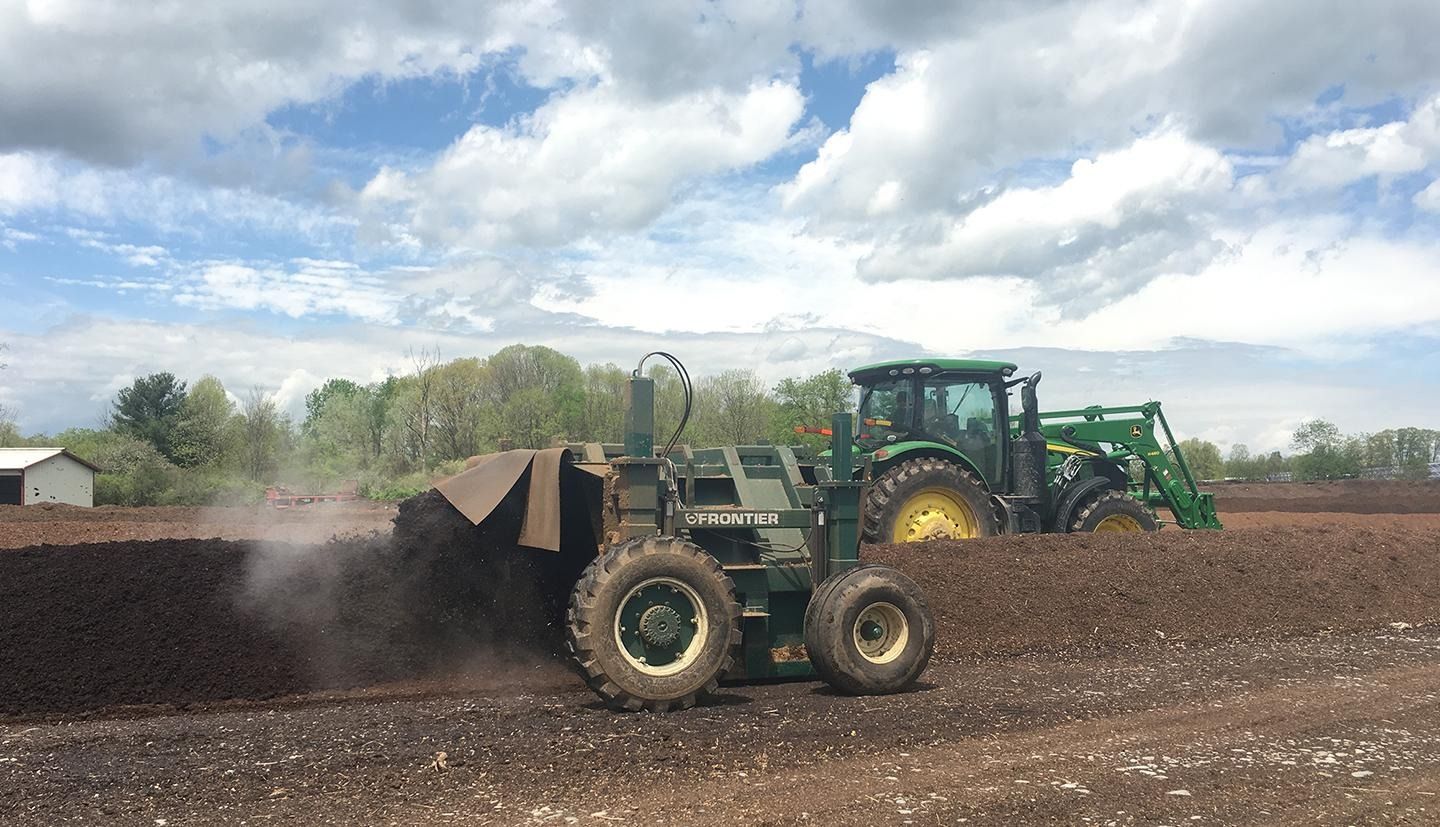Healthy soil is the foundation of resilient, profitable agriculture. Regenerative soil solutions centered on compost for soil health, biochar integration, and targeted carbon amendments can rebuild structure, boost water-holding capacity, and lock atmospheric carbon into the ground. Carbon Cycle Consulting helps farms design and execute these systems end-to-end: from compost facility design services and product selection to field rates, monitoring, and continuous improvement especially for growers seeking soil consulting for farms in Wisconsin and the Upper Midwest.
Below is a practical roadmap to deploy compost and carbon strategies with confidence.
Why Compost Is the Cornerstone
Compost is more than “organic matter.” High-quality material supplies stable carbon, humic substances, slow-release nutrients, and a living consortium of microbes that drive nutrient cycling.
What “good” compost looks like
- C:N ratio finished near 12:1–20:1, low ammoniacal odor, dark crumbly texture
- Mature (Solvita ≥6–7 or equivalent), EC within crop tolerance, pathogens/weeds in check
- Feedstocks balanced: manures or livestock bedding compost for N and biology; leaves/straw for carbon; minimal contaminants
Primary benefits
- Aggregation & tilth: fungal glues (glomalin-like substances) stabilize crumbs for better infiltration
- Nutrient efficiency: more mineralizable N and chelated micronutrients, fewer losses
- Disease suppression: competitive exclusion and antimicrobial metabolites from a diverse microbiome
Living Carbon Compost: Supercharging the Microbiome
“Living carbon compost” emphasizes biological performance: fungal-dominant profiles for perennials and no-till, or balanced fungal:bacterial ratios for annual row crops. Inoculation with native forest soil (small amounts), finished vermicompost, or tailored microbial consortia can speed succession.
Field use (typical starting ranges)
- Row crops: 3–6 tons/acre banded or blended into strips
- Vegetables & high-value specialty: 5–10 tons/acre pre-plant; compost teas/extracts for in-season biology
- Pasture/forage: 1–3 tons/acre topdress post-grazing with rainfall/irrigation
Biochar Integration Strategies: Make Carbon Last
Biochar is highly porous, recalcitrant carbon think “long-term condo housing” for microbes and nutrients. It improves CEC, aeration, and moisture bufferingn especially in sands or degraded silt loams.
Key to success: charge before you apply
- Blend with compost (1:3 to 1:5 char:compost by volume) for several weeks to inoculate and load with nutrients
- Or slurry with liquid carbon soil amendments or manure effluent for rapid charging
Application ideas
- Row crops: 0.5–2 tons/acre surface incorporated or banded with compost
- Perennial blocks (orchard/vine): 10–30% of backfill volume in planting strips plus compost
- Livestock pads/lane stabilization: char + screenings improve drainage and reduce odor
Liquid Carbon Soil Amendments: Fast Biological Priming
“Liquid carbon soil amendment” refers to dissolved humic/fulvic substances, molasses/sugars, or biologically rich compost extracts that stimulate microbial growth and root exudation responses.
When they shine
- At planting: with in-furrow starter to prime the rhizosphere
- Stress windows: drought/heat improved osmotic balance and root exploration
- Residue cycling: pairing with low C:N residues speeds microbial tie-up and release
Common passes
- In-furrow: 1–3 gal/acre (concentrate) with starter
- Foliar/chemigation: 1–2 qt/acre humics/fulvics with micronutrients (compatibility test first)
Granulated Carbon for Farms: Precision Placement
Granulated carbon (prilled biochar/activated carbon blends or carbon-rich mineral carriers) allows metered application through standard boxes or air seeders.
- Band with seed for annuals: low rates (20–60 lb/acre) create microbial “hot spots” in the root zone
- Side-dress with N to buffer volatility and improve NUE
- Sandier soils gain the most from moisture and nutrient retention
Farm Soil Carbon Capture: Turning Practices into Permanence
Carbon capture is an outcome of consistent management:
- Cover crops extend photosynthesis, funneling sugars underground (“liquid carbon pathway”)
- Reduced tillage preserves aggregates and fungal networks that store carbon as stable humus
- Compost + biochar locks carbon across short, medium, and long timeframes
- Adaptive grazing increases root mass and microbial turnover on pasture
Track it
- Baseline and annual soil organic carbon (SOC) (%), bulk density, aggregate stability, infiltration
- Microbial activity (CO₂ burst), PLFA or BRIX correlatives for biological progress
- Yields + input efficiency (NUE, irrigation inches) to quantify ROI
Compost Facility Design Services: From Pile to Program
For farms moving significant biomass, a right-sized facility pays for itself.
Design elements Carbon Cycle Consulting can configure
- Pad & leachate: all-weather surfaces, drainage, and capture/recirculation
- Aeration: turned windrows vs. positive/negative aerated static piles (ASP) for labor/fuel savings
- Feedstock math: C:N balance, moisture targets (50–60%), particle size for airflow
- QA/QC: temperature curves (PFRP compliance), maturity tests, EC/pH, screening to market specs
- Flow & safety: loader paths, traffic, signage, biosecurity, storm readiness
Outcome: consistent, mature compost ready for on-farm use or sale.
Livestock Bedding Compost: Close the Loop
Manure plus high-carbon bedding (sawdust, chopped straw) becomes a powerful bedding compost when properly aerated and matured.
Benefits
- Cuts hauling and disposal costs, controls odor and pathogens
- Returns stabilized nutrients and biology to fields
- Improves soil structure and water retention—key for drought and heavy rain resilience
Pro tip for dairies/cow–calf: Separate solids first, then compost with added structure (shredded stalks) to avoid anaerobic pockets.
A Wisconsin-Focused Approach (and Upper Midwest)
Soil consulting for farms in Wisconsin must account for:
- Glacial till diversity: from heavy clays to gravelly loams—biochar and compost rates vary
- Cold soil starts: prioritize biological primers and high-fungal compost to speed spring mineralization
- Manure logistics: winter storage limits—plan spring ASP batches to hit planting windows
- Water management: structure + cover crops to reduce runoff on slopes and lake-sensitive watersheds
Carbon Cycle Consulting builds region-specific playbooks and trains crews to run them.
Putting It All Together: A 12-Month Implementation Plan
- Baseline: soil tests (chem/biological/physical), yield maps, compaction survey
- Compost supply: source or build; set spec (maturity, EC, particle size)
- Spring: band living carbon compost + granulated carbon at planting; in-furrow liquid carbon
- Early season: foliar or fertigated humics/fulvics; compost extract for biology pulse
- Mid-season: evaluate canopy, soil moisture; side-dress N with carbon carriers if needed
- Post-harvest: apply biochar-charged compost; seed multi-species cover crop
- Winter: plan facility upgrades, feedstock contracts, and next-year rate trials
- Review: measure SOC, infiltration, NUE, and gross margin; adjust rates by block/field
Conclusion
Regenerative soil solutions aren’t one product they’re a stacked strategy. Pair living carbon compost with biochar integration, add liquid carbon at key growth stages, and use granulated carbon for precision. Back it with a dialed compost facility and region-aware agronomy. The result is healthier soil, steadier yields, better input efficiency, and measurable farm soil carbon capture.
Carbon Cycle Consulting can design, supply, and benchmark the whole program field-by-field, season-by-season.




